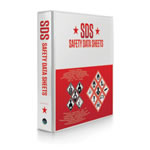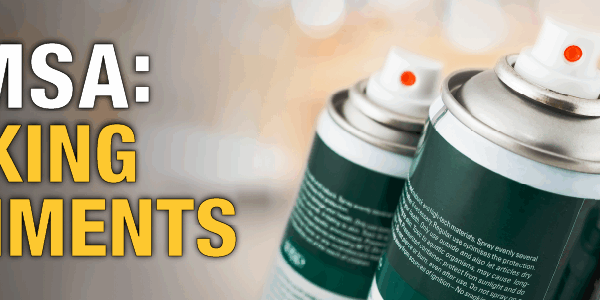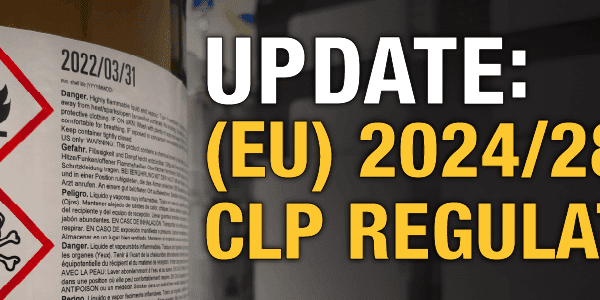Alice Hamilton, the “Mother of Industrial Medicine”
Over a hundred years ago, a book titled American Men of Science: A Biographical Dictionary included an entry that didn’t quite fit the mold of a bearded, aging scientist. “Dr. Alice Hamilton,” it said, was a scientist noted for “[p]athology and embryology of the nervous system; development of elastic tissue; tuberculous ulcers of the stomach; relationship of flies to the dissemination of typhoid fever; the toxicity of the blood in scarlet fever; surgical scarlatina.” Quite a list of work for a woman scientist in the Edwardian era who was not yet forty years of age. And yet it completely missed the subject that would make Dr. Hamilton a giant in American science – her iconic work in industrial medicine.
Alice Hamilton’s Early Life
Alice Hamilton was the daughter of a socially prominent family and spent most of her childhood in Fort Wayne, Indiana. She had three sisters and a brother, all of whom showed remarkable intellectual talents. Young Alice seems to have had a taste for adventure as well as an interest in humanitarian work and was drawn to the thoughts of a medical career by her desire to be a medical missionary in Iran.
In 1892 she enrolled in the University of Michigan Medical School and later studied at Johns Hopkins. By 1897, she had been made a professor of pathology at the Woman’s Medical School of Northwestern University. Soon she became associated with Jane Addams’ settlement community at Hull House in Chicago and became increasingly interested in the illness and injuries that she saw in working people there.
A Lead Investigator in Industrial Toxicology
Her interest in pathology as well as her “on the ground” experience with industrial illness led to her being appointed in 1908 to the Occupational Diseases Commission of Illinois, the first such commission in the United States. Hamilton threw herself into the work relying on what she called “shoe leather epidemiology.” Instead of keeping herself in the laboratory or clinical wards, she went out to talk to workers and employers, and to see industrial processes close up. Her expertise led her to be chosen as the general supervisor of the investigation.
Hamilton’s expertise was soon in demand by the U.S. federal government as well. She studied lead poisoning, mercury toxicity affecting hatters, carbon monoxide poisoning of steelworkers, and even soft tissue injuries in jackhammer-wielding stonecutters. During World War I, she was called in to resolve a strike by munitions workers suffering a mysterious illness, which Hamilton determined was caused by toxicity from the trinitrotoluene (TNT) they worked with. Her solution (wearing protective clothing that was laundered after each day’s work) might seem obvious to us today but was a breakthrough for the time.
Hamilton had a keen eye for hidden dangers in the workplace. For example, her work on lead showed how ubiquitous the toxic metal was at the time – what employers called “tinfoil” used in wrapping cigars, for example, could actually be lead, and enamel-workers could be exposed to lead fumes when working on coatings applied at other locations. Hamilton also became an outspoken critic of adding tetraethyl lead to gasoline at a time when most people assumed it was harmless.
The work that Hamilton did became pivotal in opening the eyes of both industry and regulators to the immense costs – financial and humanitarian – of uncontrolled use of toxic chemicals in the workplace. She was also an important force in developing the workers’ compensation system for those suffering from industry-related diseases.
Research and Publications
By 1919, Hamilton had been appointed as an assistant professor to the Department of Industrial Medicine at Harvard University, the first such appointment of a woman by Harvard in any field. At her own request, she did not take any faculty promotion, preferring to have the time to concentrate on her research and social work at Hull House. Her time at Harvard was in some ways difficult, as a female professor was not given the same level of respect as her male colleagues in many areas. However, she was able to persevere with her research and outreach on industrial safety.
After her retirement from Harvard in 1935, Hamilton served as a medical consultant to the U.S. Division of Labor Standards, writing reports on various industrial disease clusters. Her painstakingly documented reports drove government to create new protections for workers.
Hamilton was the author of two seminal reference works in industrial medicine – Industrial Poisons in the United States (1925) and Industrial Toxicology (1934, revised 1949). After her retirement from Harvard, she penned a memoir, Exploring the Dangerous Trades: The Autobiography of Alice Hamilton, M.D. (1943).
Dr. Hamilton passed away in 1970, in her 101st year, shortly before the creation of the Occupational Health and Safety Administration (OSHA). Surely, she would have been pleased that her work had helped the nation recognize the importance of protecting workers from the dangers of the industrial workplace.
Contact Us
Do you have any questions about hazardous chemicals in the workplace, and how modern hazard communication regulations protect us? Contact ICC Compliance Center at 855.734.5469 or send us an email, we’re happy to help.
Stay up to date and sign up for our newsletter!
We have all the products, services and training you need to ensure your staff is properly trained and informed.
 Safety Data Sheet (SDS) Services |
 OSHA / WHMIS / GHS Training Courses |
 GHS Publications |
References:
Wikipedia, “Alice Hamilton,” https://en.wikipedia.org/wiki/Alice_Hamilton#cite_ref-Jay149_48-4.
Cattel, James Keen, American Men of Science, A Biographical Dictionary, https://archive.org/details/americanmenofsci01catt/page/134/mode/1up?view=theater
NIOSH Science Blog, “A Voice in the Wilderness: Alice Hamilton and the Illinois Survey,” https://blogs.cdc.gov/niosh-science-blog/2014/04/28/alice-hamilton/Harvard University, “Harvard’s First Lady,” https://www.hsph.harvard.edu/news/magazine/centennial-alice-hamilton/
Illinois Science Council, “Dr. Alice Hamilton: a Hoosier Woman Who Established an Entirely New Field of Life-Saving Science in Early 1900s America,” https://www.illinoisscience.org/2018/06/dr-alice-hamilton/
Frierson, Gordon, “Get the Lead Out! Alice Hamilton and Industrial Toxins,” https://medihist2.blogspot.com/2015/







 ICC USA
ICC USA ICC Canada
ICC Canada